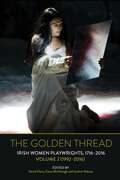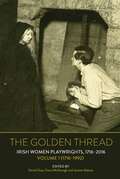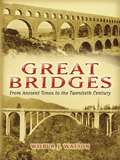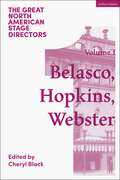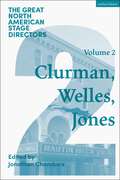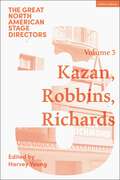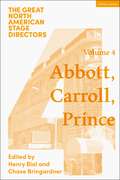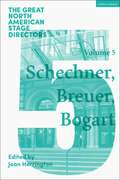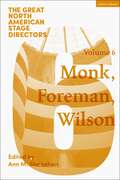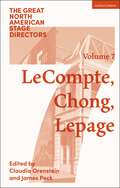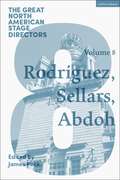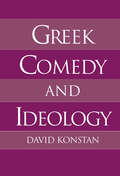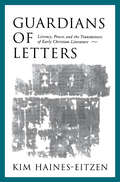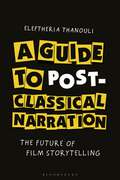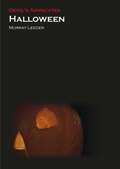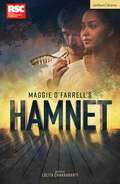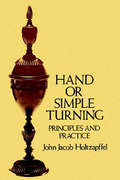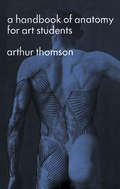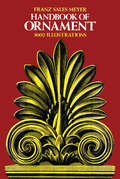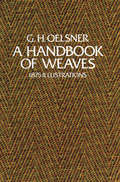- Table View
- List View
Golden Gate Bridge, USA (UEB Contracted)
This image shows the 2.7 kilometre long Golden Gate suspension bridge. It spans the width of the page and is bounded by a dashed line image border. There is a locator dot shown, which will be at the top left of the page when the image is the right way up. Along the bottom of the image is the water. Just up from this on the left side of the page is a small piece of land and one end of the bridge's roadway. Right from this is a small arch reaching up from the water then a tall tower supporting the main suspension cables, which curve down and rise up again to another tall tower on the right of the page. The roadway is suspended from vertical cables attached to the main cables and continues to another piece of land on the right of the page.
Golden Gate Bridge, USA (UEB uncontracted)
This image shows the 2.7 kilometre long Golden Gate suspension bridge. It spans the width of the page and is bounded by a dashed line image border. There is a locator dot shown, which will be at the top left of the page when the image is the right way up. Along the bottom of the image is the water. Just up from this on the left side of the page is a small piece of land and one end of the bridge's roadway. Right from this is a small arch reaching up from the water then a tall tower supporting the main suspension cables, which curve down and rise up again to another tall tower on the right of the page. The roadway is suspended from vertical cables attached to the main cables and continues to another piece of land on the right of the page.
The Golden Thread: Irish Women Playwrights, Volume 2 (1992-2016)
This two-volume edited collection illuminates the valuable counter-canon of Irish women’s playwriting with forty-two essays written by leading and emerging Irish theatre scholars and practitioners. Covering three hundred years of Irish theatre history from 1716 to 2016, it is the most comprehensive study of plays written by Irish women to date. These short essays provide both a valuable introduction and innovative analysis of key playtexts, bringing renewed attention to scripts and writers that continue to be under-represented in theatre criticism and performance. Volume Two contains chapters focused on plays by sixteen Irish women playwrights produced between 1992 and 2016, highlighting the explosion of new work by contemporary writers. The plays in this volume explore women’s experiences at the intersections of class, sexuality, disability, and ethnicity, pushing at the boundaries of how we define not only Irish theatre, but Irish identity more broadly.CONTRIBUTORS: Nelson Barre, Mary Burke, David Clare, Shonagh Hill, Mária Kurdi, José Lanters, Fiona McDonagh, Dorothy Morrissey, Justine Nakase, Brian Ó Conchubhair, Brenda O'Connell, Shane O'Neill, Graham Price, Siobhán Purcell, Carole Quigley, Sarah Jane Scaife, Melissa Sihra, Clare Wallace
The Golden Thread: Irish Women Playwrights, Volume 1 (1716-1992)
This two-volume edited collection illuminates the valuable counter-canon of Irish women’s playwriting with forty-two essays written by leading and emerging Irish theatre scholars and practitioners. Covering three hundred years of Irish theatre history from 1716 to 2016, it is the most comprehensive study of plays written by Irish women to date. These short essays provide both a valuable introduction and innovative analysis of key playtexts, bringing renewed attention to scripts and writers that continue to be under-represented in theatre criticism and performance.Volume One covers plays by Irish women playwrights written between 1716 to 1992, and seeks to address and redress the historic absence of Irish female playwrights in theatre histories. Highlighting the work of nine women playwrights from the eighteenth and nineteenth centuries, as well as thirteen of the twentieth century’s key writers, the chapters in this volume explore such varied themes as the impact of space and place on identity, women’s strategic use of genre, and theatrical responses to shifts in Irish politics and culture.CONTRIBUTORS: Conrad Brunström, David Clare, Thomas Conway, Marguérite Corporaal, Mark Fitzgerald, Shirley-Anne Godfrey, Úna Kealy, Sonja Lawrenson, Cathy Leeney, Marc Mac Lochlainn, Kate McCarthy, Fiona McDonagh, Deirdre McFeely, Megan W. Minogue, Ciara Moloney, Justine Nakase, Patricia O'Beirne, Kevin O'Connor, Ciara O'Dowd, Clíona Ó Gallchoir, Anna Pilz, Emilie Pine, Ruud van den Beuken, Feargal Whelan
The Gothic Peckinpah
by Tony WilliamsThis book argues for the importance of Gothic in understanding one of the key elements within the films of Sam Peckinpah (1925-1984). Although occasionally noted in the past, the Gothic has been generally overlooked when most critics consider the work of Sam Peckinpah with the exception of the Freudian based Crucified Heroes (1979) by Terence Butler. This work not only examines the films made after that date, especially the often dismissed The Osterman Weekend (1983) and the two music videos he made for Julian Lennon, but also places the director within the context of the developing work on Gothic that has since appeared. Peckinpah has been identified as the director of one undisputed masterpiece, The Wild Bunch (1969). By focussing on the key role Gothic plays in most of the director’s work, this book offers a way to see Peckinpah beyond The Wild Bunch and the Western, viewing him as a director who had the potential of evolving further, had circumstances permitted, to continue his critique of American life within the developing lens of the Gothic.
Graffiti Planet: The Best Graffiti from Around the World
by Alan KetA celebration of the creativity of graffiti artists from all over the world.Ever controversial, graffiti or street art has become a significant art form and continues to evolve and transform urban landscapes in cities around the globe.Compiled by an insider on the New York graffiti scene, KET, this is a collection of the work of some of the world’s top graffiti artists.Showcases work from artists such as Banksy (London), Can2 (Munich), T-Kid (New York), Os Gemeos (Sao Paolo) and many more.Graffiti Planet is a perfect companion to this dynamic and vibrant art form.
Great Bridges: From Ancient Times to the Twentieth Century
by Wilbur J. WatsonBridges serve a practical purpose, providing passage over rivers, valleys, roads, railroad tracks, and other obstacles to transportation. But many bridges are also works of art. This splendid archive by an expert on the history of bridges and civil engineering amply illustrates the art of good bridge design, as exemplified by ancient and modern constructions. Wilbur J. Watson's study ranges far and wide, and his text -- accompanied by 200 rare photographs and illustrations -- contains vivid descriptions of many of the Old and New World's finest bridges, as well as historical data, and considerable literary and legendary lore.Bridges of all purposes and sizes are considered--from stone viaducts in Roman Iberia and Chinese masonry arches of the Han dynasty to the pontoon spans of Asia Minor and the modern steel and concrete suspension bridges in Geneva, Switzerland, and in New York. Here also are views of the Old London Bridge (1209), the Karlsbrücke in Prague, the imposing 14th-century Valentré bridge in Cahors, France, and scores more.A fact-filled pictorial guide, this volume will be welcomed by students of engineering and architecture, and anyone who has ever marveled at the size and grandeur of a well-built bridge.
Great North American Stage Directors Volume 1: David Belasco, Arthur Hopkins, Margaret Webster (Great Stage Directors)
by Professor James PeckThis volume assesses the contributions of David Belasco, Arthur Hopkins, and Margaret Webster, whose careers shaped the artistic and specialist identity of the Broadway director. Their work spans almost a century and captures the rapidly changing social and cultural landscape of 20th-century America. While their aesthetic styles differed greatly, they were united in their mastery of theatre craft and their impact on theatrical collaboration. The essays in this volume explore how these directors established and exploited Broadway as the epicentre of theatre in the United States, blended the role of producer and director, and managed the tensions between commercial success and artistic ambition.The Great North American Stage Directors series provides an authoritative account of the art of directing in North America by examining the work of twenty-four major practitioners from the late 19th century to the present. Each of the eight volumes examines three directors and offers an overview of their practices, theoretical ideas, and contributions to modern theatre. The studies chart the life and work of each director, placing his or her achievement in the context of other important theatre practitioners and broader social history. Written by a team of leading experts, the series presents the genealogy of directing in North America while simultaneously chronicling crucial trends and championing contemporary interpretation.
Great North American Stage Directors Volume 2: Harold Clurman, Orson Welles, Margo Jones (Great Stage Directors)
by Professor James PeckThis volume assesses the accomplishments of three mid-20th century, North American stage directors: Harold Clurman, Orson Welles, and Margo Jones. Though their theatre-making endeavours were distinct, each produced work that challenged preconceived notions of theatre-making, all while working within the structure of a company. As directors drawn to the potential rewards of collaboration, all also were keenly adept at understanding how the relationship with a company of collaborators is often marked by struggle and crisis. The essays in this volume explore how these accomplished directors not only created bold work, but also drew on the complex energies of the theatre companies with which they worked to reimagine the shape and scope of theatre directing.The Great North American Stage Directors series provides an authoritative account of the art of directing in North America by examining the work of twenty-four major practitioners from the late 19th century to the present. Each of the eight volumes examines three directors and offers an overview of their practices, theoretical ideas, and contributions to modern theatre. The studies chart the life and work of each major North American theatre director, placing his or her achievement in the context of other important theatre practitioners and broader social history. Written by a team of leading experts, the series presents the genealogy of directing in North America while simultaneously chronicling crucial trends and championing contemporary interpretation.
Great North American Stage Directors Volume 3: Elia Kazan, Jerome Robbins, Lloyd Richards (Great Stage Directors)
by Professor James PeckThis volume chronicles the lives and artistry of Elia Kazan, Jerome Robbins, and Lloyd Richards. Their commitment to staging new works, which often focused on the experiences of immigrant and working-class families, significantly expanded the scope and possibilities of American theatre across the 20th century. It illuminates too their collaborations with a range of innovative theatre artists, including Lee Strasberg, Clifford Odets, Marlon Brando, Arthur Miller, Tennessee Williams, Lorraine Hansberry, Leonard Bernstein, Stephen Sondheim, and August Wilson.The Great North American Stage Directors series provides an authoritative account of the art of directing in North America by examining the work oftwenty-four major practitioners from the late 19th century to the present. Each of the eight volumes examines three directors and offers an overview of their practices, theoretical ideas, and contributions to modern theatre. The studies chart the life and work of each director, placing his or her achievement in the context of other important theatre practitioners and broader social history. Written by a team of leading experts, the series presents the genealogy of directing in North America while simultaneously chronicling crucial trends and championing contemporary interpretation.
Great North American Stage Directors Volume 4: George Abbott, Vinnette Carroll, Harold Prince (Great Stage Directors)
by Professor James PeckGeorge Abbott, Vinnette Carroll, and Harold (Hal) Prince were trailblazing figures who helped shape and define the Broadway musical over the course of the 20th century. Their careers expanded the boundaries of the genre, highlighting the critical role of the director in the creation of a new musical. As theatre history, the essays in this volume help to complicate and deepen the reader's understanding of the musical genre of Broadway and of the enduring legacies of these three pioneers. As lessons in theatrical direction, they illustrate the particular issues involved in directing musicals, as well as the stakes of working commercially at the highest levels of the industry.The Great North American Stage Directors series provides an authoritative account of the art of directing in North America by examining the work of twenty-four major practitioners from the late 19th century to the present. Each of the eight volumes examines three directors and offers an overview of their practices, theoretical ideas, and contributions to modern theatre. The studies chart the life and work of each director, placing his or herachievement in the context of other important theatre practitioners and broader social history. Written by a team of leading experts, the series presents the genealogy of directing in North America while simultaneouslychronicling crucial trends and championing contemporary interpretation.
Great North American Stage Directors Volume 5: Richard Schechner, Lee Breuer, Anne Bogart (Great Stage Directors)
by Professor James PeckRichard Schechner, Lee Breuer, and Anne Bogart share a spirit of profound adventure and that adventure is the redefinition of theatre itself. They are rare hybrids; the confluence of their theatrical roles as directors, scholars, theorists and teachers has placed them among the most influential thinker/practitioners of their generation. This book reveals the ways in which their consistent inquiry enabled them to re-examine, re-frame, and re-invent their own practice. The essays in this volume explore the ways in which Schechner, Breuer and Bogart have established powerful legacies of consistently innovative theatre most often created in the company of an ensemble of collaborative artists. Their influence is undeniable in the reformulation of theatre practices from the 1970s onward. The Great North American Stage Directors series provides an authoritative account of the art of directing in North America by examining the work of twenty-four major practitioners from the late 19th century to the present. Each of the eight volumes examines three directors and offers an overview of their practices, theoretical ideas, and contributions to modern theatre. The studies chart the life and work of each director, placing his or her achievement in the context of other important theatre practitioners and broader social history. Written by a team of leading experts, the series presents the genealogy of directing in North America while simultaneously chronicling crucial trends and championing contemporary interpretation.
Great North American Stage Directors Volume 6: Meredith Monk, Richard Foreman, Robert Wilson (Great Stage Directors)
by Professor James PeckThis volume assesses the work of Meredith Monk, Richard Foreman, and Robert Wilson, three artists who have revolutionized the craft of directing and the art of theatre in both related and unique ways. Though their early artistic backgrounds differ, ranging from architecture, music and dance to writing, they are similar in that none of them began their career as a director per se or received formal training as such. They each assumed the director's role based on the demands of their complex artistic visions, which combine art forms, but resist synthesis, finding expression in the differences and tensions between the forms. The essays in this volume explore how these auteur directors combine text, movement, film, sound and music, installation and visual arts to achieve their visions, employing multi-perceptual modes to evoke full and rich theatrical experiences. The Great North American Stage Directors series provides an authoritative account of the art of directing in North America by examining the work of twenty-four major practitioners from the late 19th century to the present. Each of the eight volumes examines three directors and offers an overview of their practices, theoretical ideas, and contributions to modern theatre. The studies chart the life and work of each director, placing his or her achievement in the context of other important theatre practitioners and broader social history. Written by a team of leading experts, the series presents the genealogy of directing in North America while simultaneously chronicling crucial trends and championing contemporary interpretation.
Great North American Stage Directors Volume 7: Elizabeth LeCompte, Ping Chong, Robert Lepage (Great Stage Directors)
by Professor James PeckThis volume focuses on three artists who embrace media and technology as essential elements of their theatrical expression: Elizabeth LeCompte, Ping Chong, and Robert Lepage. Diverse in their aesthetic interests, they nevertheless share an approach to directing that includes technological media on stage as central to a rigorously crafted production concept. Technological elements live alongside and negotiate with the theatre's human players, disclosing, shaping, and even intruding on the dramas they enact. The essays in this volume explore how all three directors have provided decisive responses to a question that has dogged the theatre for at least the last century: what relationship can theatre, an art form grounded in live, ephemeral, expression, have to technology?The Great North American Stage Directors series provides an authoritative account of the art of directing in North America by examining the work of twenty-four major practitioners from the late 19th century to the present. Each of the eight volumes examines three directors and offers an overview of their practices, theoretical ideas, and contributions to modern theatre. The studies chart the life and work of each director, placing his or her achievement in the context of other important theatre practitioners and broader social history. Written by a team of leading experts, the series presents the genealogy of directing in North America while simultaneously chronicling crucial trends and championing contemporary interpretation.
Great North American Stage Directors Volume 8: Jesusa Rodriguez, Peter Sellars, Reza Abdoh (Great Stage Directors)
by Professor James PeckThe three directors gathered in this volume all approach theatre-making in part as an act of citizenship. Jesusa Rodríguez, Peter Sellars, and Reza Abdoh differ markedly in many important respects, but they all come to the theatre as an intervention in the public sphere. Rodríguez, Sellars, and Abdoh blend a spirit of social critique with acts of democratic community building. These essays examine how theatre, for them, is not a sphere of aesthetic experience insulated from the divisions, antagonisms, and alliances of a conflicted society. It is a way to forge fleeting but consequential communities that might reverberate through that society and affect its future development.The Great North American Stage Directors series provides an authoritative account of the art of directing in North America by examining the work of twenty-four major practitioners from the late 19th century to the present. Each of the eight volumes examines three directors and offers an overview of their practices, theoretical ideas, and contributions to modern theatre. The studies chart the life and work of each director, placing his or her achievement in the context of other important theatre practitioners and broader social history. Written by a team of leading experts, the series presents the genealogy of directing in North America while simultaneously chronicling crucial trends and championing contemporary interpretation.
Green Gifts: 40 Sustainable and Beautiful Present Ideas
by Rosie James Claire CaterFrom homemade spa-day pamper products to gorgeous homewares, these 40 eco-gifting ideas will show you how to create presents from everyday household items. Whether you're eco-conscious and keen to reduce your plastic usage or want to be more sensible with your spending, this gorgeous craft compendium provides step-by-step guides to produce gifts that don't compromise on design or quality. Presents for sustainable living Home-grown plants and succulents from cuttings Self-care treatsOn-the-go necessities Special occasions Presents for furry loved ones … as well as tips and tricks on creating your own wrapping paper and gift tags, and much more besides. You'll be able to create modest yet striking products from items in your home and reward friends and family with carefully made contemporary treats. And by replacing disposable presents with recycled, eco-friendly ones that have been hand-made from materials in your home, you'll be saving your pennies while saving the world. The ultimate guide to eco-living and giving.
Guardians Of Letters: Literacy, Power, And The Transmitters Of Early Christian Literature
by Kim Haines-EitzenA Guide to Post-classical Narration: The Future of Film Storytelling
by Dr. Eleftheria ThanouliIn A Guide to Post-classical Narration, Eleftheria Thanouli expands and substantially develops the innovative theoretical work of her previous publication, Post-classical Cinema: an International Poetics of Film Narration (2009). A Guide to Post-classical Narration: The Future of Film Storytelling presents a concise and comprehensive overview of the creative norms of the post-classical mode of narration. With dozens of cases studies and hundreds of color stills from films across the globe, this book provides the definitive account of post-classical storytelling and its techniques. After surfacing in auteur films in varied production milieus in the 1990s, the post-classical options continued to gain ground throughout the 2000s and 2010s, gradually fertilizing several mainstream productions in Hollywood. From Lars von Trier's Europa (1991) to Zack Snyder's Army of the Dead (2021) and Baz Luhrmann's Elvis (2022), the post-classical narration has shown not only impressive resilience but also tremendous creativity in transforming its key formal principles, such as fragmented and multi-thread plotlines, hypermediated realism, parody, graphic frame construction, complex chronology, and intense self-consciousness. Through the meticulous textual analysis of the post-classical works, Eleftheria Thanouli addresses head-on a series of methodological questions in narrative research and brings the tradition of historical poetics back into the limelight. By reinforcing her previous work with numerous new films as well as more nuanced narrative terms and concepts, she not only strengthens her position on post-classical cinema but also establishes the relevance of formalist analysis in the study of film today.
Halloween (Devil's Advocates)
by Murray LeederThe 1970s represented an unusually productive and innovative period for the horror film, and John Carpenter's Halloween (1978) is the film that capped that golden age – and some say ruined it, by ushering in the era of the slasher film. Considered a paradigm of low-budget ingenuity, its story of a seemingly unremarkable middle-American town becoming the site of violence on October 31 struck a chord within audiences. The film became a surprise hit that gave rise to a lucrative franchise, and it remains a perennial favourite. Much of its success stems from the simple but strong constructions of its three central characters: brainy, introverted teenager Laurie Strode, a late bloomer compared to her more outgoing friends, Dr. Loomis, the driven, obsessive psychiatrist, and Michael Myers, the inexplicable, ghostlike masked killer.Film scholar Murray Leeder offers a bold and provocative study of Carpenter's film, which hopes to expose qualities that are sometime effaced by its sequels and remakes. It explores Halloween as an unexpected ghost film, and examines such subjects as its construction of the teenager, and the relationship of Halloween the film to Halloween the holiday, and Michael Myers's brand of "pure evil." It is a fascinating read for scholars and fans alike.
Hamnet (Modern Plays)
by Maggie O'Farrell'She's like no one I've ever met... She's like fire and water all at once.'Warwickshire, 1582. Agnes Hathaway, a natural healer, meets the Latin tutor, William Shakespeare. Drawn together by powerful but hidden impulses, they create a life together and make a family.As William moves to London to discover his place in the world of theatre, Agnes stays at home to raise their three children but she is the constant presence and purpose of his life.When the plague steals 11-year-old Hamnet from his loving parents, they must each confront their loss alone. And yet, out of the greatest suffering, something of extraordinary wonder is born.This new play based on Maggie O'Farrell's best-selling novel and adapted by award-winning playwright Lolita Chakrabarti (Life of Pi, Red Velvet, Hymn), pulls back a curtain on the imagined family life of the greatest writer in the English language. Hamnet is a love letter to passion, birth, grief and the magic of nature. This updated and revised edition was published to coincide with the West End transfer of the original RSC production in October 2023.
Hand or Simple Turning: Principles and Practice (Dover Woodworking Ser.)
by John Jacob HoltzapffelGreat Victorian classic offers full coverage of basic lathe techniques: history and development, special apparatus, softwood turning, hardwood turning, metal turning, more. Projects include billiard ball, egg cups, ash trays, vases, jardiniers, others. First inexpensive paperback reprint.
A Handbook of Anatomy for Art Students (Dover Anatomy For Artists Ser.)
by Arthur ThomsonSkeletal structure, muscles, heads, special features. Exhaustive text, anatomical figures, undraped photos. Male and female. 337 illustrations.
Handbook of Ornament: A Grammar Of Art, Industrial And Architectural Designing In All Its Branches, For Practical As Well As Theoretical Use (classic Reprint) (Dover Pictorial Archive Ser.)
by Franz Sales MeyerRepublished unabridged from the final comprehensive edition, this work contains the largest single-volume collection of classical art motifs ever compiled. It reproduces material from Greek and Roman, medieval European, Islamic, Renaissance, baroque, and early nineteenth-century art, architecture, and design — in all, presenting artists, crafters, and students with more than 3,000 designs.Featured design elements include networks, Gothic tracery, geometric designs, akanthos leaves, lotus ornamentation, animal ornamentation, grotesque figures, fret bands, chains, interlacements, rosettes, undulations, spirals, link borders, cresting borders, finials, crockets, gargoyles, foliations, panels, repeated ornaments, and hundreds of other elements. Other plates show decorated pottery vases, religious utensils, weapons, furniture, lamps, jewelry, and other artifacts, in addition to heraldic motifs and ornamental letters.
A Handbook of Weaves: 1875 Illustrations
by G. H. OelsnerTo anyone concerned with the design of fabrics, the structure of the cloth is, of course, of prime importance for achieving best results and most satisfying ultimate appearance. Oelsner's A Handbook of Weaves, long the most reliable and comprehensive source of information on the subject, will save you hours of research work and offer information necessary for new cloth effects. It covers the field thoroughly from the simple draft and plain weave to the more complicated fancy weaves, with a clear, lucid text and with 1,875 working diagrams.Just a few of the many weaves fully explained, differentiated, and illustrated in this volume are irregular, double-stitched, and filling satins; basket and rib weaves; steep, undulating, broken, offset, corkscrew, interlocking, herringbone, and fancy twills; honeycomb and lace weaves; tricot and metalassé weaves; corded, piqué, and kersey weaves; and literally hundreds more.The outstanding section on crépe weaves (over 45 pages, 342 weaves) explains 10 different methods, including arranging other weaves, rearranging warp threads, interlocking a weave over another, drafting a weave in four squares, and transporting weaves in checkerboard order.One of the work's most valuable features, particularly to the manufacturer, is in the section which shows with text and picture how from a simple swatch of material one may obtain the full details of construction and layout of any fabric made: weave and color patterns, number of threads per square inch, weight of cloth, sizes of warp yarn and filling yarn, etc.A full chapter is given showing how interesting effects may be obtained by arrangement of yarns in contrasting colors in either warp or filling or both, and how effects can be produced by combining weave and color patterns in the same cloth. A large number of examples, with 207 diagrams, show color effects in twills, basket weaves, crépes, etc.Other topics covered here that are rarely found in textile design books are breaks or recesses in the cloth, weaves that deflect certain threads, broche fabrics, double transposed textures, reform weaves, the determination of the best weaves, the determination of the best types of weave for specific textures and many similar topics.These and many other special features add to this unsurpassed collection's immense value for the textile manufacturer, the designer, the stylist, the hand-loom weaver, the power-loom weaver, and the teacher and student of textiles. It is at once a fully indexed reference, a lucid "how-to-do-it" book, and a storehouse of unusual information and practical suggestions.Includes a supplement on the analysis of weaves and fabrics.

